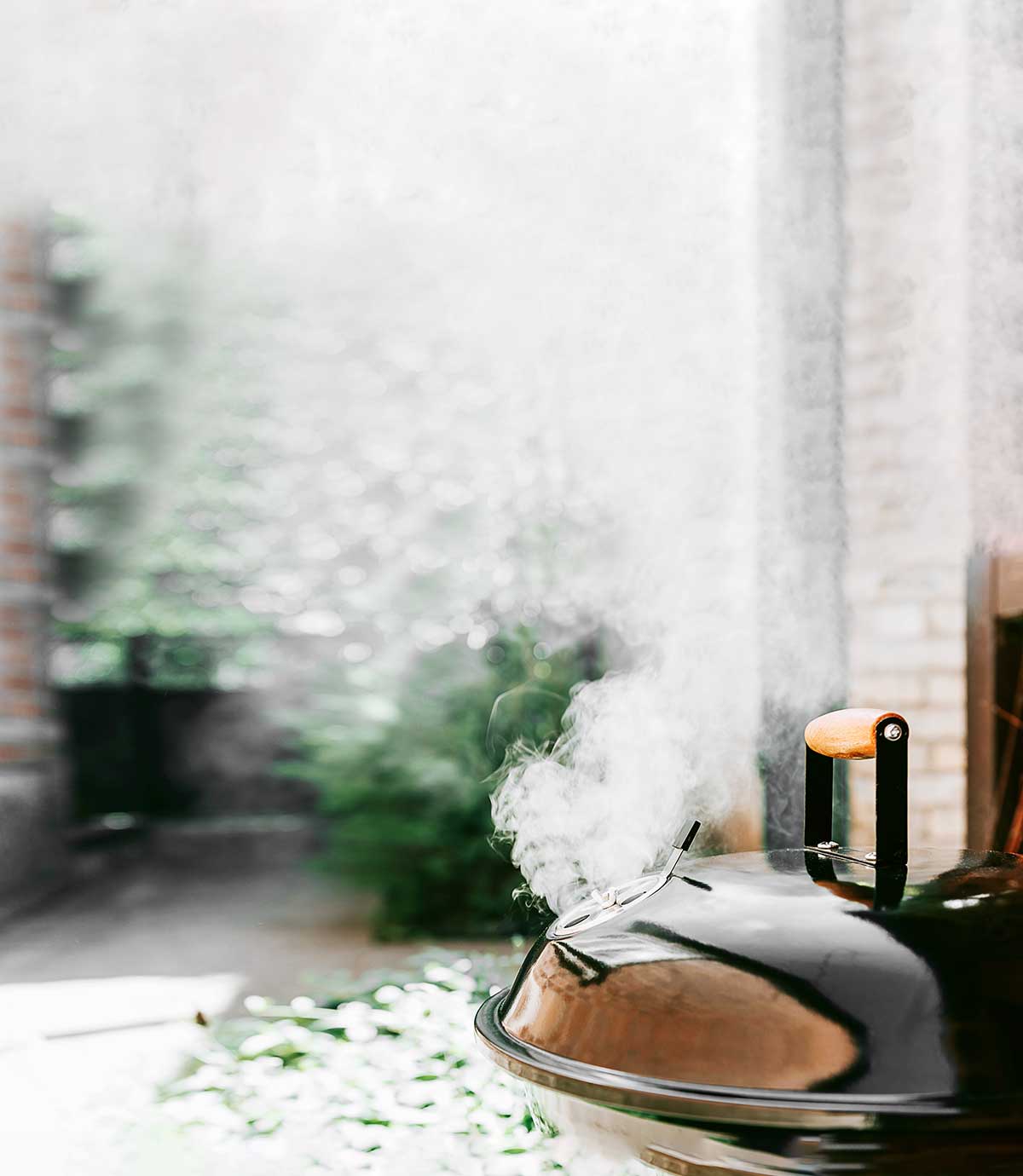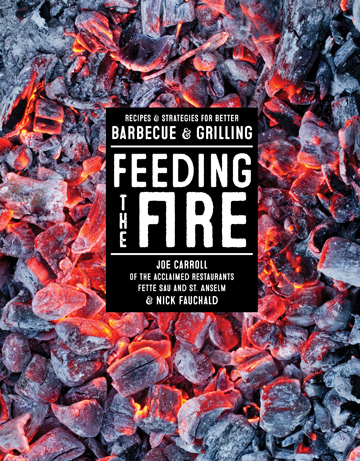
We’re big proponents of smoking. And while we have nothing against a crazy expensive and glam smoker setup, sometimes that’s just not in the budget. And sometimes you want to build a little confidence in your ability to smoke meat, ribs, salmon, chicken, turkey, and so much more before committing a hefty portion of your paycheck. We understand. So do Joe Carroll and Nick Fauchild, authors of Feeding the Fire: Recipes and Strategies for Better Barbecue & Grilling. Below, their straightforward and simple advice on outfitting your old kettle grill for some serious summer gustatory goodness.—LC Editors
Kettle grills make pretty good smokers. The main disadvantage is that you have to open the cover to add more charcoal and wood or to check your meat, which lets out heat and precious smoke. So, to make sure you do that as infrequently as possible, I recommend using hardwood chunks rather than wood chips. The hardwood chunks take longer to burn down and, thus, will release smoke over a longer time. Otherwise, the process is very similar to using a dedicated smoker.
1. Prepare your grill
You’ll need a kettle grill (obviously) and charcoal, as well as hardwood chunks or wood chips, a chimney starter, newspaper, and an instant-read or probe thermometer as well as heavy-duty fireproof gloves and a disposable aluminum tray. Remove any ash and debris if the smoker has been previously used and clean the grates.
2. Get those coals glowing

Want to Save This?
Fill your chimney starter about halfway with hardwood charcoal. Loosely crumple a couple of pieces of newspaper and drizzle or spray them with vegetable oil (this helps the paper burn longer and speeds up the charcoal-lighting process).
Stuff the paper into the chimney’s lower chamber place the chimney on the smoker’s top grate, and light it. Let the charcoal burn until the coals are glowing red and coated in gray ash, about 15 minutes.
Put on a pair of heavy-duty fireproof gloves and carefully dump the charcoal into one side of the grill—over the bottom air vent if your grill has one—leaving the other half free of coals. Place a disposable aluminum tray on the other side to use as a drip pan.
3. Build some smoke
Place a few hardwood chunks or a foil packet of wood chips [Editor’s Note: Don’t forget to puncture the foil to allow the smoke to escape.] over the coals. Add the top grate and put your meat over the drip pan. Cover the grill, placing the air vents in the lid over the meat. Open both vents about halfway.
4. Monitor the temperature
Smoke the meat, monitoring the smoker temperature on a thermometer inserted through the top vent. If the grill gets too hot, close the top vent and, if necessary, partly close the bottom vent. If using hardwood chunks, add a couple of pieces of unlit hardwood charcoal when the temperature dips down near 200°F (93°C). Or, if your wood chip packet stops producing smoke, remove it with tongs and replace it with a fresh packet.








